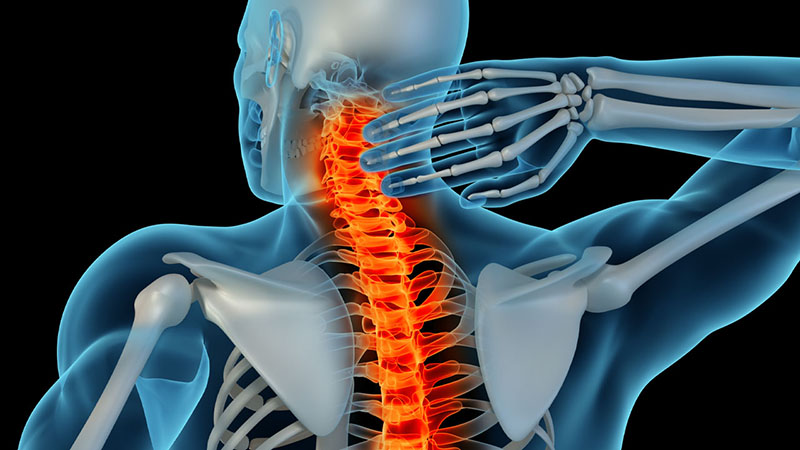It occurs when the blood supply to the spinal cord is cut off. When the blood supply is cut off, the spinal cord can’t get oxygen and nutrients. The tissues of the spinal cord may be damaged and not be able to send messages to the rest of your body causing Spinal stroke.
However, Treatment of a spinal stroke usually depends on the cause.
What Is a Spinal Stroke?
A Spinal stroke occurs when blood flow to the spine is blocked. However, When the spinal cord doesn’t receive enough blood, it doesn’t get enough oxygen and nutrients, causing the cells in the spinal cord to become damaged and even die.
Blood flow to the spine can be affected by:
- Blood clotting.
- Narrowing of arteries from plaque buildup (which can be caused by high levels of bad cholesterol, high blood pressure, smoking, diabetes, and other vascular risk factors)
- Bleeding into the spinal cord, caused by High blood pressure (hypertension).
What are the Signs of a Spinal Stroke?
The symptoms of a spinal stroke depend on what part of the spinal cord is affected and how much damage is done to the spinal cord.
However, Common signs include:
- Numbness or weakness in the face, arm, or leg.
- Sudden confusion or trouble speaking or understanding speech.
- Tingling sensations.
- Stroke Paralysis.
- inability to feel heat or cold.
- Lower back pain
However, Lower back pain, also known as Dorsalgia, is a common symptom of a Spinal stroke.
Does a spinal stroke cause dorsalgia?
Dorsalgia is a spinal pain that emerges from several different parts of your backbone. So, consider the particular spine section where the pain initiates.
However, Keep in mind that a spinal stroke can cause dorsalgia. Also, The intensity of the condition depends on which part of the backbone is affected and what is the possible source of pain. Therefore, to rightly determine the basis of the pain, you require a proper diagnosis by a professional.
What are the long-term side effects of a spinal stroke?
Long-term effects include:
- Physical weakness or paralysis.
- Loss of sensation in arm or leg.
- Difficulty walking or using hands.
- Difficulty with breathing.
- Back Pain.
- Urinary or bowel incontinence.
- Mental health issues, including depression.
What Can Cause a Spinal Stroke?
As we get older, our blood vessels narrow and clots can form. Sometimes this is a natural consequence of the aging process, but there are certain factors that may also increase the likelihood of spinal cord ischemia.
These include:
- Being overweight or obese.
- High blood pressure and/or high cholesterol
- Smoking.
- Lack of exercise.
- Heart disease.
- A history of heart disease in the family.
However, In most cases, a stroke occurs if a blood clot blocks an artery feeding the spine directly. This is more likely to happen if the artery has also narrowed because of plaque. If blood pressure is high, this can also contribute to the artery bursting and the necessary nutrients not getting to the spinal cord.
Spinal stroke in children:
A spinal stroke in a child is exceedingly rare. The cause of stroke in children is different from that in adults. Most of the time, a stroke in a child is caused by either an injury to the spine or a congenital condition that causes problems with the blood vessels or affects blood clotting.
However, other common causes may include:
- vasculitis (inflammation of the blood vessels)
- clotting disorders
- lack of vitamin K
- infections, such as bacterial meningitis
- sickle cell anemia
- umbilical artery catheter in a newborn
- a complication of heart surgery
In some cases, the cause of the spinal stroke in a child is unknown.
Spinal Strokes in men:
Spinal strokes are more common in men. However, the most common symptoms in men include:
- difficulty maintaining balance also called poor coordination
- weakness on one side of the body
- numbness on one side of the body
Women were more likely to report “nontraditional” symptoms, such as lightheadedness, headaches, and a change in mental status, such as confusion. Men can also exhibit these symptoms.
However, because men tend to exhibit better-known symptoms, bystanders and medical personnel may recognize strokes more quickly in men, reducing the time between the stroke and treatment.
How can we Diagnose?
An MRI scan can help diagnose a stroke. Diagnosing spinal stroke can be a complicated process because the associated symptoms are similar to those that may be present as a result of other issues, such as a physical injury to the spine.
The main test for a spinal stroke, however, is to have an MRI scan that produces a detailed image of the spine and shows where the blood supply has been blocked or if there is a bleed.
How is it Treated?
Treatment is aimed at treating the cause of the spinal stroke and reducing symptoms, for example:
Medications:
Medications help in treating a stroke. Doctors may prescribe prescription-strength nonsteroidal anti-inflammatory drugs if over-the-counter options, like naproxen (Aleve, Naprosyn), aren’t providing relief.
Physical Therapy:
If you become paralyzed or lose sensation in certain parts of your body, you may require physical and occupational therapy to preserve the function of your muscles.
Urinary catheter:
If you have bladder incontinence, you may need to use a urinary catheter.
What Can We Do to Prevent it?
By doing the following measures we can prevent a spinal stroke:
- Exercising regularly.
- Maintaining a normal weight.
- Following a healthy diet.
- Maintaining healthy cholesterol levels.
- Keeping blood pressure in check.
- Don’t smoke.
To improve your blood pressure and cholesterol levels, you should also eat a balanced and healthy diet rich in fruits, vegetables, and whole grains.












Add Comment